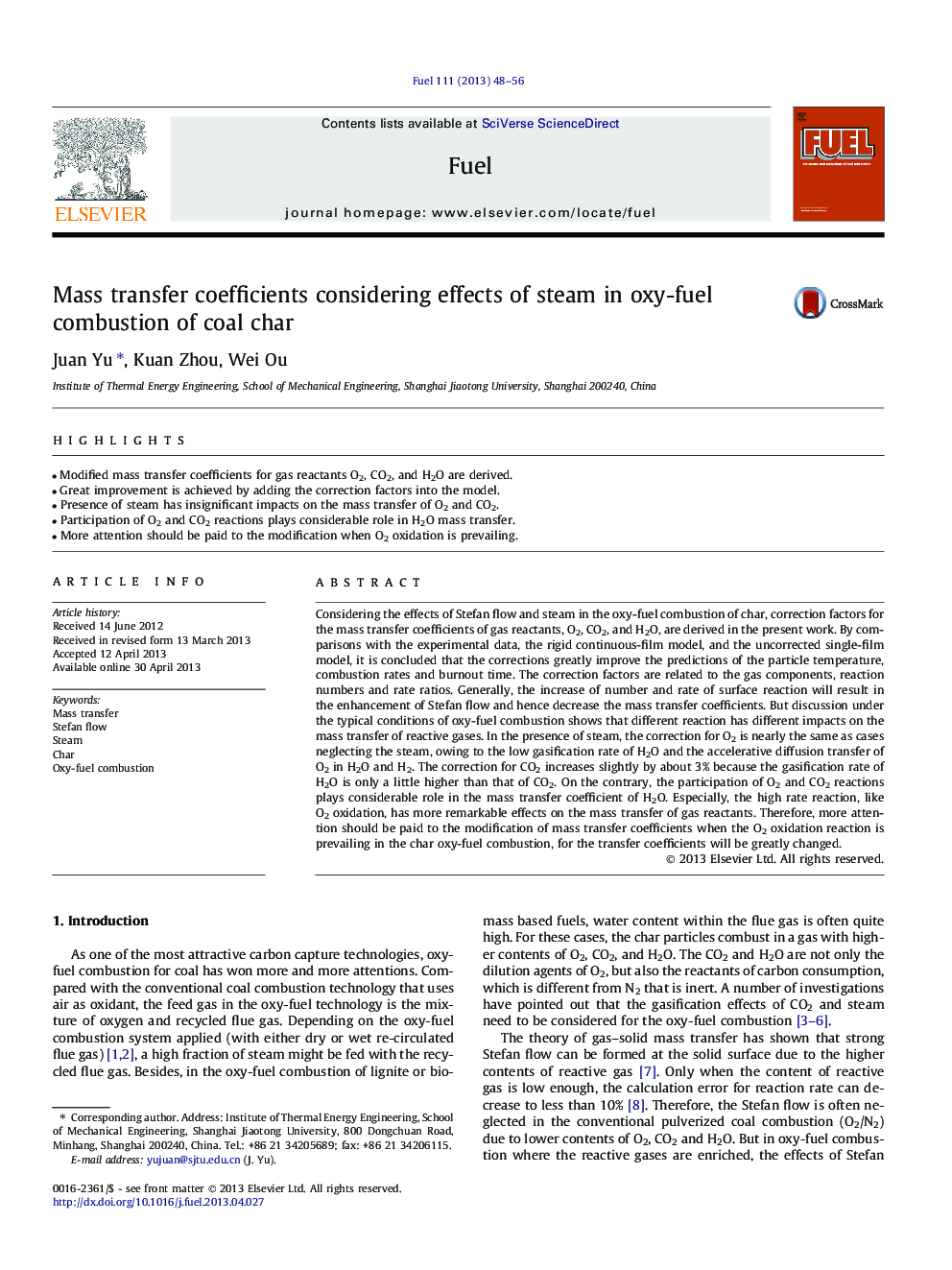| Article ID | Journal | Published Year | Pages | File Type |
|---|---|---|---|---|
| 6640212 | Fuel | 2013 | 9 Pages |
Abstract
Considering the effects of Stefan flow and steam in the oxy-fuel combustion of char, correction factors for the mass transfer coefficients of gas reactants, O2, CO2, and H2O, are derived in the present work. By comparisons with the experimental data, the rigid continuous-film model, and the uncorrected single-film model, it is concluded that the corrections greatly improve the predictions of the particle temperature, combustion rates and burnout time. The correction factors are related to the gas components, reaction numbers and rate ratios. Generally, the increase of number and rate of surface reaction will result in the enhancement of Stefan flow and hence decrease the mass transfer coefficients. But discussion under the typical conditions of oxy-fuel combustion shows that different reaction has different impacts on the mass transfer of reactive gases. In the presence of steam, the correction for O2 is nearly the same as cases neglecting the steam, owing to the low gasification rate of H2O and the accelerative diffusion transfer of O2 in H2O and H2. The correction for CO2 increases slightly by about 3% because the gasification rate of H2O is only a little higher than that of CO2. On the contrary, the participation of O2 and CO2 reactions plays considerable role in the mass transfer coefficient of H2O. Especially, the high rate reaction, like O2 oxidation, has more remarkable effects on the mass transfer of gas reactants. Therefore, more attention should be paid to the modification of mass transfer coefficients when the O2 oxidation reaction is prevailing in the char oxy-fuel combustion, for the transfer coefficients will be greatly changed.
Related Topics
Physical Sciences and Engineering
Chemical Engineering
Chemical Engineering (General)
Authors
Juan Yu, Kuan Zhou, Wei Ou,
